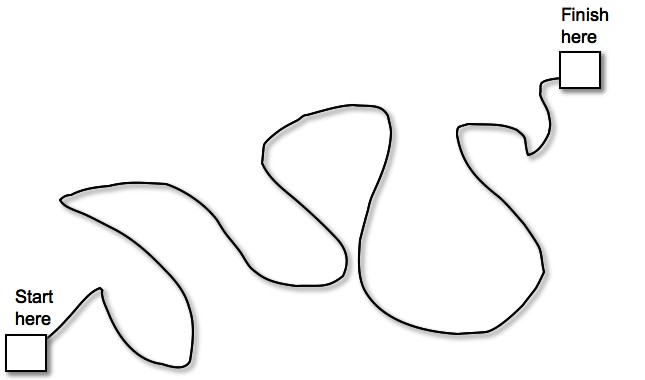Even though guys like Tom Dwan (a.k.a. Durrrr) can run up a $200 starting bankroll to over $10 million in 3 or 4 years playing poker online, I don’t recommend this as a serious ‘investment’ strategy!
Nor, do I recommend simply dumping your entire portfolio (401k included) into just one stock pick, as Josh has done ….
… even though both Tom and Josh are both ‘big winners’ … so far 😉
That’s why I recommended – for those amongst my readers who insist on traversing the high-wire of their financial life (there ARE rich prizes at the other side, IF they make it, so who am I to say “don’t!”???) – a simple three-part strategy to protecting their finances, by taking:
1/3 of any ‘windfall gains’ for spending (presuming that the speculation activity is their primary source of income);
1/3 of any ‘windfall gains’ to fuel a parallel ‘passive income’ investment strategy; and,
1/3 of any ‘windfall gains’ for their trading activity (this could be trading stocks/options; developing or flipping real-estate with little money down; etc.; etc).
If the person has another (reliable) source of income, then any ‘windfall gains’ can simply be split 50/50 between ‘speculation’ and ‘passive investments’.
Of course, this will slow down growth, which is why Josh still wants to:
Go 100% 401k and 200% brokerage … [because] sometimes the opportunity is so obvious and risk so low
Spoken like a true Most Probably Will Go Broke Someday Trader!
This strategy is just there to protect the Josh’s of this world in the unlikely event that they should miscalculate ever so slightly 😉
Look, I’m not going to attempt to teach anybody anything about trading, but it’s always good to remember: it takes just ONE bad piece of news on a ‘volatile stock’ (bad ceo, drug that doesn’t get FDA approval or shows unexpected adverse side-effects, law suit) to override the fundamentals.
It’s the equivalent to a ‘bad beat‘ in poker (a.k.a. ‘variance’) … they are inevitable in poker – and, I would argue, also in trading – and you survive them by good bankroll management …
… after all, there are still Enrons out there that people are trading up every day 🙂
On the other hand, Jeff throws a curve ball:
Looks like you have changed your stance a little on diversification. [http://7million7years.com/2008/12/19/the-allure-of-diversification/, where you don’t recommend diversification due loss specialized knowledge and consigning yourself to average returns]
I’m interested why you made the shift…
As I said to Jeff, this may appear to be a shift, but it’s not …
Diversification ≠Bankroll Management!
… for example:
– if Josh said that he was going to invest 100% in buy/hold cashflow-positive real-estate, I would say “go for it”
– if Josh said that he was going to invest 100% in an existing profitable business, I would say “go for it”
– if Josh said he was going to invest 100% in 4 or 5 stocks that he felt were undervalued and was prepared to hold for the long-term, I would say “go for it”
… but, I would say that if the future income stream is in any doubt (e.g. if it is a royalty, or speculation, or short-term investment) to divert some of the cashflow produced from profits (capital gains and/or operating profits i.e. one of the ‘thirds’ that I mention above) and use those to start creating your own Perpetual Money Machine: that’s VERY different from the standard type of diversification that most financial advisers talk about.


 In Monday’s
In Monday’s  Last time,
Last time,  I was just rereading
I was just rereading 

 Most people that I talk to seem to misunderstand inflation and how to apply it to thinking about your retirement …
Most people that I talk to seem to misunderstand inflation and how to apply it to thinking about your retirement …